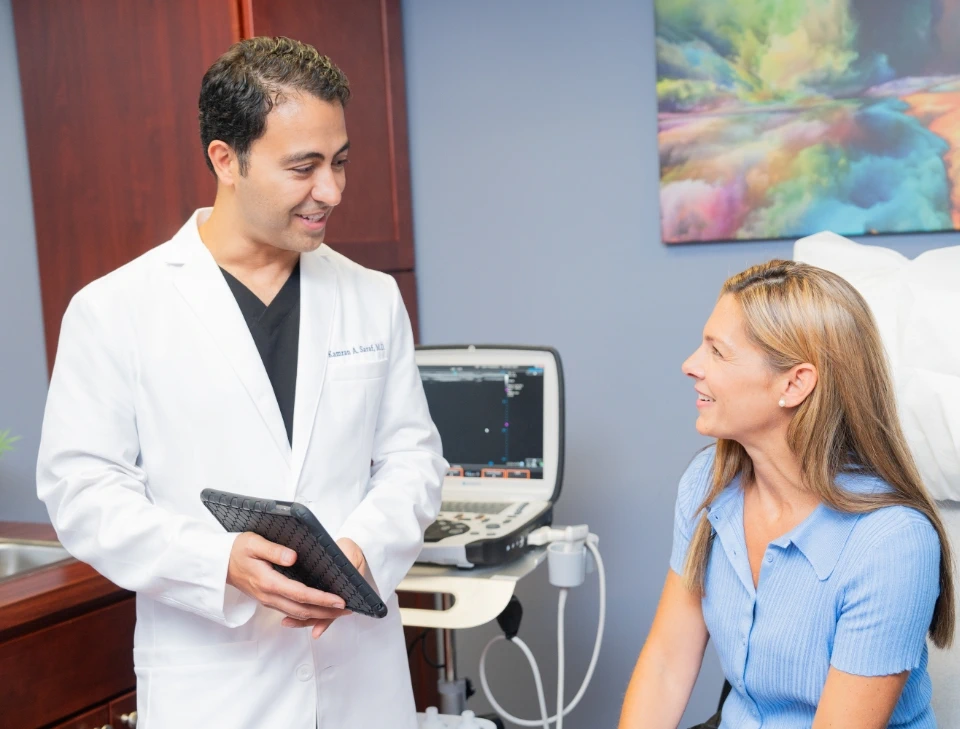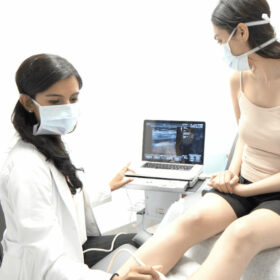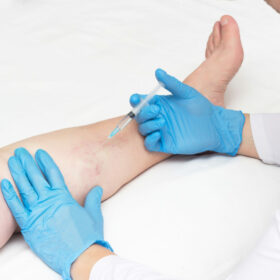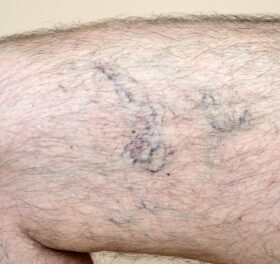Are you tired of those unsightly spider veins on your legs? If so, you may have considered sclerotherapy, a common treatment for removing these veins. But you may be wondering, is sclerotherapy permanent? In this article, we will explore this question and also provide tips to prevent the recurrence of spider veins.
The Vein Treatment Clinic is a group of state-of-the-art vein clinics specializing in cutting-edge, minimally invasive spider vein and varicose vein treatments. We have offices in New York, Long Island, New Jersey, California, and Maryland. If you’re in New York, you can find our vein treatment clinics in Midtown Manhattan and the Financial District.
Please schedule an appointment at your nearest vein treatment clinic for sclerotherapy.
What is Sclerotherapy?
Sclerotherapy is a minimally invasive procedure that has been used to treat spider veins for over a century. It involves injecting a special solution directly into the affected veins. The solution causes the veins to collapse and close, which stops blood flow and eventually leads to the veins disappearing.
The procedure itself is relatively quick, and it is usually done in a doctor’s office. A small needle is used to inject the solution into the veins, and multiple injections may be needed to treat all of the affected veins. After the injections, you must wear compression stockings to reduce swelling and promote healing.
The solution used in sclerotherapy is specifically designed to be safe and effective for treating spider veins. It is a salt solution that irritates the inside of the vein, causing it to close and eventually disappear. In some cases, a foam solution may be used instead of a liquid solution for larger varicose veins or more difficult-to-treat veins.
Is Sclerotherapy Permanent?
The success of sclerotherapy in eliminating spider veins depends on several factors. The size and location of the veins, the underlying cause of the spider veins, and the individual’s overall health can all impact the effectiveness of the treatment. If your spider veins are caused by underlying venous insufficiency, your vein doctor must address the root cause before performing sclerotherapy to minimize the risk of spider vein recurrence.
For some individuals, sclerotherapy can be a permanent solution, and the treated veins will not reappear. In many cases, the results are long-lasting and can provide a significant improvement in the appearance of the legs. However, it is important to keep in mind that there is always a chance that new spider veins may develop over time.
There are several factors that can increase the risk of spider veins recurring after sclerotherapy, including genetics, weight gain, and a sedentary lifestyle. If you have a family history of spider veins or other vein problems, you may be more likely to develop them even after having sclerotherapy. Additionally, weight gain can put additional pressure on the veins, leading to the development of new spider veins. A sedentary lifestyle can also increase the risk of developing spider veins, as it can lead to poor circulation and increased pressure on the veins.
To reduce the risk of recurrence, maintain a healthy weight, exercise regularly, and wear compression stockings. These steps can improve your overall vein health and reduce the risk of developing new spider veins.
Tips to Prevent the Recurrence of Spider Veins
While sclerotherapy can be a highly effective treatment for spider veins, there are several steps you can take to reduce the likelihood of new veins appearing.
- Maintain a Healthy Weight: Carrying extra weight can put added pressure on the veins in your legs, increasing the likelihood of developing new spider veins. To reduce this pressure, aim to maintain a healthy weight through a balanced diet and regular exercise.
- Exercise Regularly: Physical activity helps improve circulation, reducing the risk of new spider veins. Incorporate regular exercise into your routine, especially if your job requires long periods of standing or sitting.
- Wear Compression Stockings: Compression stockings provide gentle pressure to the legs, promoting blood flow and reducing the risk of blood pooling in the veins. Consider wearing them if you have a job that requires long periods of standing or sitting.
- Avoid Prolonged Standing or Sitting: Standing or sitting for extended periods can slow blood flow and increase the risk of spider veins. Take breaks and stretch your legs every hour or so, especially if your job requires long periods of sitting or standing.
- Manage Chronic Conditions: Chronic conditions, such as diabetes, can increase the risk of developing spider veins. Properly managing these conditions and discussing any concerns with your doctor can reduce your risk of new spider veins.
When to Expect Results After Sclerotherapy
After undergoing sclerotherapy, it is normal to experience some redness, swelling, and bruising at the injection site. These side effects usually resolve within a few days to a week. However, the full results of sclerotherapy may take several weeks to become apparent. The treated veins will gradually fade and disappear over time. In some cases, multiple treatments may be necessary to achieve the desired results.
Varicose Veins vs. Stretch Marks
Varicose veins and stretch marks may appear similar on the surface, but they are actually two very different conditions. Understanding the differences between varicose veins and stretch marks can help you better identify and manage these skin concerns.
Varicose Veins
Varicose veins are swollen, twisted veins that are often blue or dark purple in color. They can be painful and may cause discomfort or aching in the legs. Varicose veins are typically caused by a problem with the valve system in the veins, which leads to blood pooling and vein enlargement.
Stretch Marks
Stretch marks, on the other hand, are narrow, indented lines that can appear on the skin when it is stretched rapidly. They are often caused by weight gain, rapid growth during puberty, or pregnancy. Stretch marks are not painful and do not affect circulation, but they can be cosmetically concerning for some people.
While varicose veins and stretch marks may look similar, they are caused by different factors and require different forms of treatment. If you are experiencing symptoms of varicose veins, it is important to talk to your vein doctor for a proper diagnosis and treatment plan.












